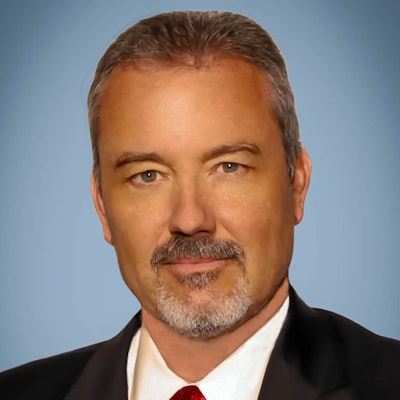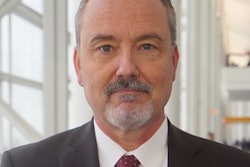
Let's face it, no one likes recruiting. It is time-consuming, expensive, and frustrating. Radiology Business Solutions has two decades of experience in recruiting radiologists for our management client practices. Over the years, we have learned that the key to successful recruiting efforts is proper planning and the implementation of standardized processes.
There are five important phases of the recruiting process: preparing, sourcing, screening, interviewing, and closing. This article will concentrate on all five of these phases, which is where most recruiting efforts fall short.
1. Preparing
Before beginning any phases of the recruitment process, and even before there is a recruiting need, your group should consider forming a recruitment committee. Compartmenting the recruitment work makes the process more efficient and responsive.
 Daniel Corbett of Radiology Business Solutions.
Daniel Corbett of Radiology Business Solutions.Every new recruiting effort should then begin with careful planning. The recruitment committee should be tasked with identifying preferred attributes of the new hire: What subspecialty training is needed? Which modalities are required and which are not?
The committee should also create a detailed job profile with key data points about the practice and job opportunity. Once the job profile has been approved by the practice, it becomes the focal point on which all discussions with candidates revolve. You should share the job profile with each candidate before interviewing as an introduction to the practice and a guide for questions and answers during the interview.
In our experience, most candidates drop out when they receive mixed information from different members of the group. Singing with one voice shows the candidate that the group is organized, efficient, and cohesive.
2. Sourcing
Sourcing candidates, although not easy, is straightforward. AuntMinnie.com's Career Center, the American College of Radiology (ACR) Career Center, and other job boards are helpful sources, as is networking. Recruiters can also be a viable option if your own efforts are not leading you to enough candidates.
3. Screening
All applicants should be processed by the recruitment committee. Each candidate should have a committee member assigned as the liaison/point of contact. The committee should review each candidate's CV, ranking them with the following criteria in mind:
- Fellowship training in the desired subspecialty
- Subspecialty work desired versus what is available
- Job history -- noting any gaps or short job durations
- Stated modalities performed or not performed
- Education or training at institutions where other members of the group may have trained
- Experience and work volume -- can the candidate meet the workload of the practice?
- Family ties to the community/area
- Reason why the person is making a change
The goal should be to interview only highly ranked candidates who meet the criteria and preferably have ties to the community or area. Highly ranked candidates should have phone conversations with at least two members of the committee before the group commits to an in-person interview. This may sound onerous, but it can save time and money by limiting onsite interviews to candidates who are potential good fits and are more likely to accept a new position. Phone calls are cheap compared to plane tickets!
It is important to take notes during candidate calls, detailing all the important information discovered. Phone interviewers should compare notes in a discussion with the full committee to solidify the best candidates and note discrepancies between interviews. The committee can decide if the candidate appears to meet the workload expectations and would fit with the group's culture. Candidates with any "signal flags" should be set aside until all higher ranked candidates have been interviewed and dismissed.
Some groups believe they must interview many candidates to find the right fit. With a clearly defined job profile and a recruitment committee dedicated to thorough screening, groups can confidently interview a few suitable candidates with a high likelihood of signing.
References are a critical part of the screening process. Calling references is time-consuming, so the process should be reserved for candidates invited to interview in person. Committee members should create a form with questions to document reference calls efficiently and effectively.
4. Interviewing
The onsite interview process can make or break a successful recruitment effort. Interviews should only be scheduled when all or a majority of the recruitment committee and group leadership are available to participate. Scheduling an interview with key decision-makers on vacation is a waste of time and money. Some practices do not pay for travel and lodging for interviews. If your practice is in a major metropolitan city and you have many promising applicants, then this may be acceptable; if not, we recommend covering costs. If you are interviewing a highly ranked candidate, covering the cost of the interview sends the message that the group values the candidate's time and interest.
An agenda should be set and sent to the candidate in advance. This shows organization and clear interest in maximizing the candidate's time. The agenda can be set by the committee or a practice manager. The agenda should include a minimum of 30 minutes for individual interviews with the group radiologists.
In a small group, every radiologist should meet the candidate. Grumpy partners and those with attitude issues should not be left alone with candidates. Interviews can be wrecked by lone wolf partners!
The agenda should include a tour of the department and introductions to department heads and key technologists. Many groups do not include hospital administration in their candidate interviews. We find this to be a lost opportunity for relationship development with the hospital. It also sends a clear signal to the candidate that there is a good relationship between the group and hospital administration.
In our experience, getting the CEO, chief operating officer, or chief financial officer on the agenda for a 15-minute meet and greet pays huge dividends. The interview agenda should conclude with a dinner at a nice restaurant. Pick a smaller, quiet establishment or one with a private room. The point of the dinner is for everyone to get to know the candidate and his or her spouse on a personal level. If you can barely hear the person sitting next to you, it is a waste of time and money.
Always invite the spouse and pay for both to visit. We all know spouses are crucial in decision-making. If candidates ask to interview without their spouse, you should only accept if there is a tight community tie. If candidates tell you their spouse will go wherever they get a good job, they are lying to you and to themselves! Set up a community tour for the spouse when the candidate is at the hospital. A tour with a known real estate agent to see neighborhoods, homes, and schools is valuable and appreciated.
One committee member or the practice manager should act as a liaison for the candidate throughout the interview process, guiding the candidate through the day. Try not to hand off the candidate or send him or her on a journey to find the next person to meet. Thoughtful attention to detail during the interview process does not go unnoticed by candidates.
5. Closing
Recruiting efforts often fail during the closing process. There must be a timely postinterview process in place for the group to assess the candidate, review or call more references, communicate with the candidate, and possibly make an offer. Many good candidates have been lost during lag time to follow up.
The committee member liaison should contact candidates within a day or two to make sure they arrived home safely and to answer immediate questions. Ask candidates directly if they are interested in the job and how it ranks with others they are considering. Ask candidates what their time frame is for making a decision. Inform candidates of the group's decision-making process and timeline. The committee member should report the details of the calls to the partners, which will help indicate the next steps.
Simultaneously, the committee should email the group partners the day after an interview for feedback. This ensures the interview is still fresh in their minds. Ask each radiologist who met the candidate to comment on his or her credentials, experience, modality fit, work/volume expectations, personality/cultural fit, and interest in the job. It is also valuable to assess the perception of a spouse's interest in the community.
With this information available, the committee can quickly determine whether the group is in agreement about a candidate's suitability and whether an offer should be put up for a vote. If the group decides to make an offer to a candidate who has indicated that he or she will accept, a contract should be sent within two weeks. Long delays and poor communication at this critical point can deter promising candidates.
Summary
The key elements to hiring new radiologists are preparation, standardization of process, and good communication. Planning beforehand will not only ensure success but also save time, money, and frustration. Thoughtful and honest sharing of information between the candidate and the group during the screening process ensures that only quality, serious candidates are interviewed.
Every effort during the process should be designed to maximize the candidate's interest in the practice. Through our work with many different clients and their management teams, we have found that the recruiting process sets the stage for the long-term integration and overall happiness of radiologists in a new practice.
We hope these tips will help your practice organize and improve your recruiting efforts and success!
Daniel Corbett is the chief of business development for Radiology Business Solutions (RBS), a national radiology management and consulting company. He is responsible for client staffing and has been recruiting radiologists exclusively for the past 18 years, with 30 years in the healthcare staffing business. RBS has recruited more than 500 radiologists for management client practices and other independent radiology practices.
The comments and observations expressed are those of the author and do not necessarily reflect the opinions of AuntMinnie.com.



















